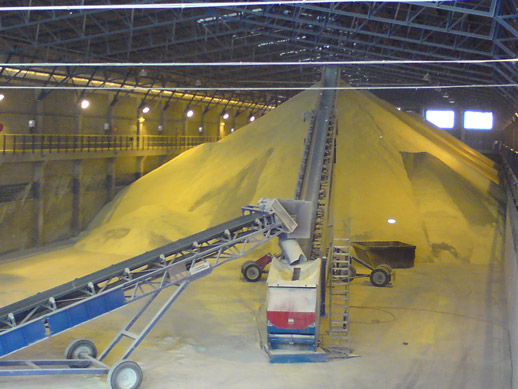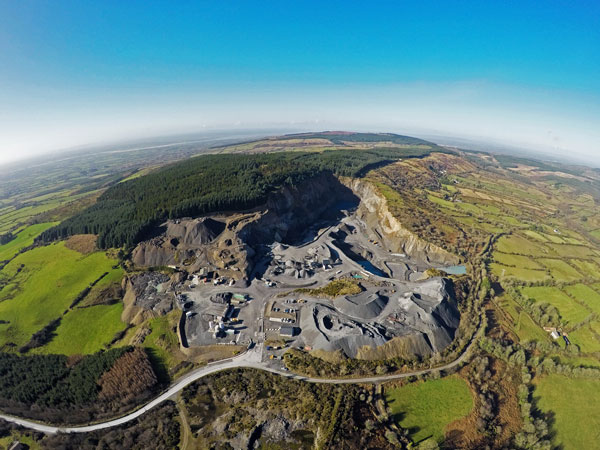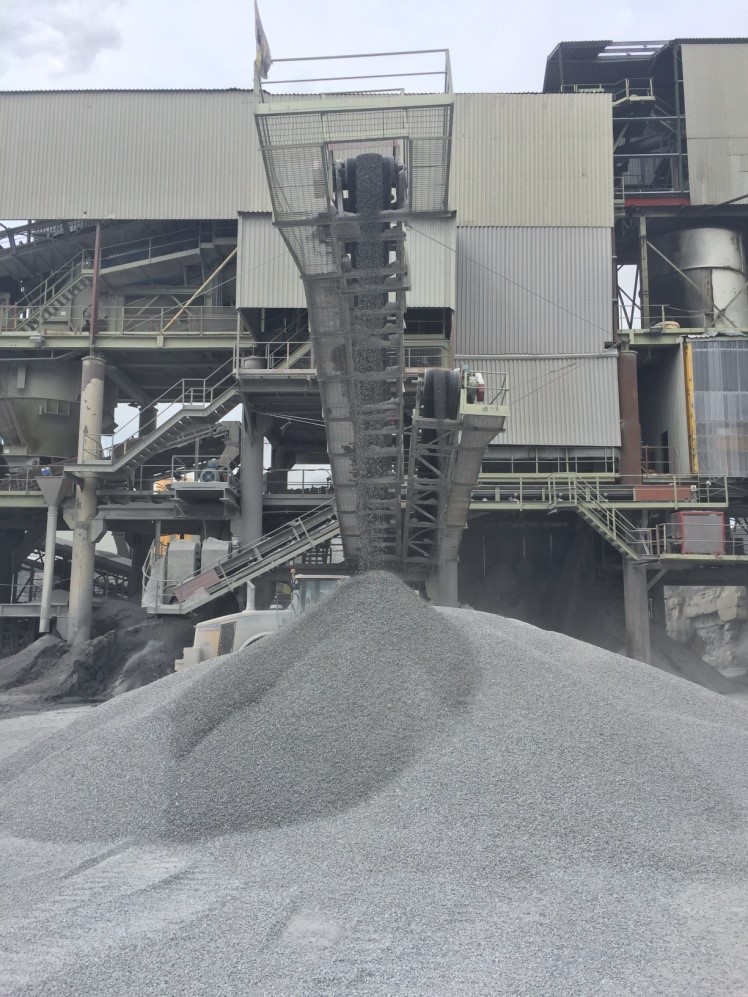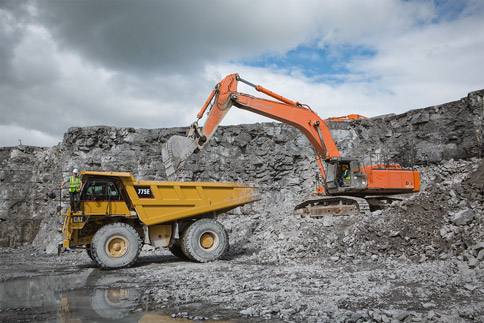Exploration: The Essential Element for Successful Mining and Quarrying
One classic view of geology held by many mining engineers is that there are only two types of rock; ore and waste. True enough, but deciding which is which is a task that requires skill and experience.
The first requirement is to locate the ore, i.e. the economically valuable material worth extracting. This in turn requires decisions as to what one needs to find.
In prehistoric times, these decisions were driven by defence against predators, hunting, heat, light, ornamentation and later, agriculture. Tools were made from stone (axes, clubs, scraping tools, knives, arrowheads). Settlement patterns often followed the availability of such materials; for example, populations were concentrated around sources of flint which was used extensively for cutting and shaping.
Early hominids found the materials they needed in river beds, on or near surface and on beaches. They sometimes followed the materials underground and/or by quarrying, but technology limited these activities to relatively shallow depths. The earliest known mines, from 43,000 years ago, are in Swaziland and were for the extraction of red ochre (iron ore) for pigmentation.
Local and regional knowledge of where sought-after materials might be found was valuable and was likely passed on by word of mouth. Most minerals were found by examining the earth’s surface, i.e. by surface prospecting. This is still a valuable element in discovery, but has long been supplemented by other techniques.
Systematic description of rocks and soils seen on surface and in cliffs and mountains is the basis for geological mapping. The chemical composition of rocks and soils (geochemistry) provides information as to the value of minerals present; the chemistry of soils provides important clues as to the nature and extent of underlying rocks.
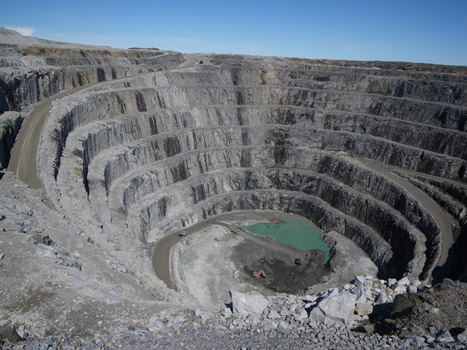

Subsurface disposition of rocks and minerals is studied using electrical, gravity and magnetic survey techniques known as geophysics; different rock types have different geophysical responses. Samples are taken from under the ground by drilling; these techniques can penetrate to depths of several kilometres. Data sets from these different activities are combined by computer to produce interactive maps and diagrams in Geographic Information Systems (GIS).
Mediterranean civilisations expanded rapidly through the discovery and use of copper, gold, silver and lead. Romans explored and mined across Europe and the resultant trade routes were the sinews of the Roman Empire. The lure of great riches of gold and silver spurred the exploration of the globe by European powers from the 1400’s onwards. Financed by sovereigns and by wealthy investors, expeditions led to precious metal discoveries in the Americas and in Africa and the creation of enormously wealthy European empires. Many new discoveries were in areas already developed by indigenous people whose technologies were less developed than those of the Europeans.
Approximately 70% of mineral discoveries are made by smaller or junior companies. They are typically financed by risk capital raised in stock markets. The process is similar to the “grubstaking” of gold prospectors in earlier centuries, whereby an investor would equip a prospector intent on making a fortune in unexplored parts of the world, in exchange for part of the resulting profits. Larger companies and sovereign states also invest in exploration, but seem to lack the agility and nimbleness of the smaller entities which must make discoveries in order to survive.

The leading locations for exploration financing are Canada, Australia and the UK. The success rate of these companies is relatively low. Over the last decade, the number of large discoveries has declined with over a quarter of new discoveries being made near previously known mineral deposits. Non-ferrous worldwide exploration financing peaked at $2Bn in 2012 and has declined rapidly to $7.5Bn by 2016, coinciding with sharply reduced commodity prices in that period. A recovery in some commodity prices has improved the climate for exploration for gold and zinc in particular, which is good news for Ireland, a significant zinc province.
Mineral exploration companies with Irish roots emerged as the Irish mining industry developed in the mid 1960’s with the opening of the Tynagh Mine in Co Galway. Irish mineral exploration companies have been active in Ghana, Mali, Mozambique, Burkina Faso, Canada, Eastern Europe, Australia, the USA and the Former Soviet Union. Some have ceased trading; some have made discoveries but failed to develop them successfully and were taken over by larger groups. A few have gone on to become mining companies. Exploration is the R&D of mining; like a lot of R&D, it often fails, but without it there can be no success.
In quarrying, exploration has often been an “also ran”, with operators large and small content to expand operations at exiting sites without too much consideration as to what the expansion might entail. This approach is changing rapidly as the specifications for quarry products are increasingly stringent, requiring physical and chemical standards which require specialist skills in locating the right materials.
Notwithstanding the application of a wide range of scientific techniques, mineral exploration still needs a particular entrepreneurial mind-set; an ability to spot commodity trends, persistence and doggedness, an ability to deal with harsh conditions, poor logistics, suspicious governments and often sceptical communities. The neatest discovery can be derailed by unforeseen circumstances (e.g. a currency fluctuation, a commodity price collapse); a good explorer still needs a lot of that elusive commodity, luck.

